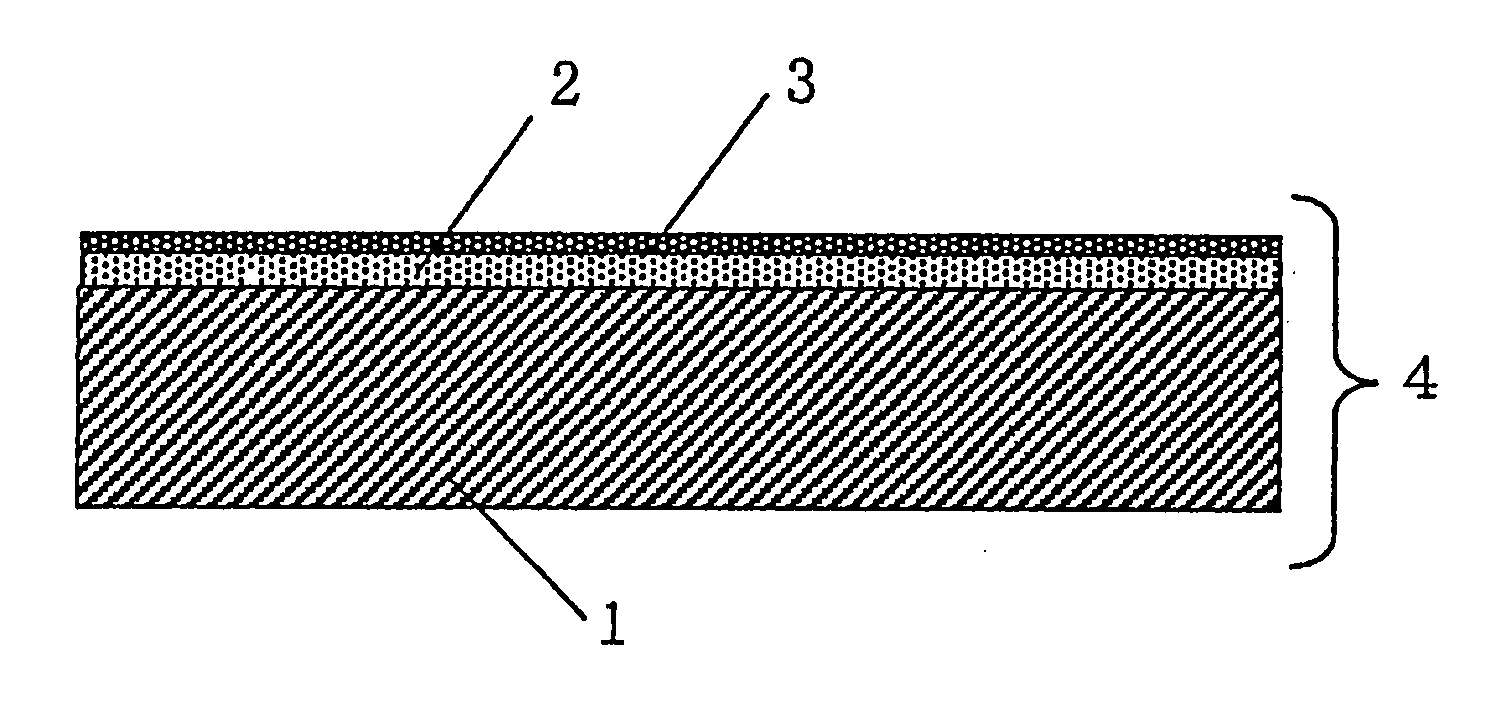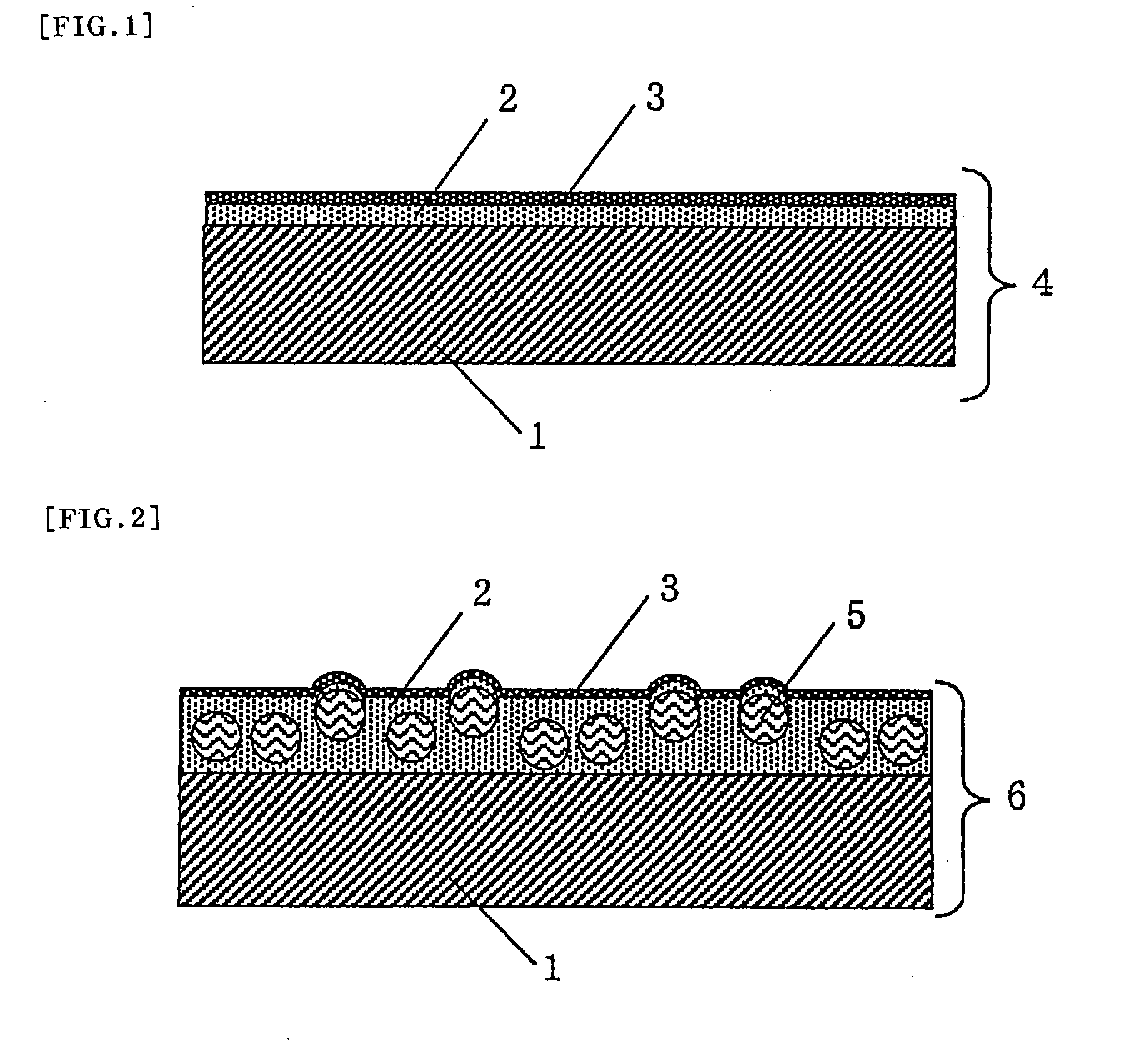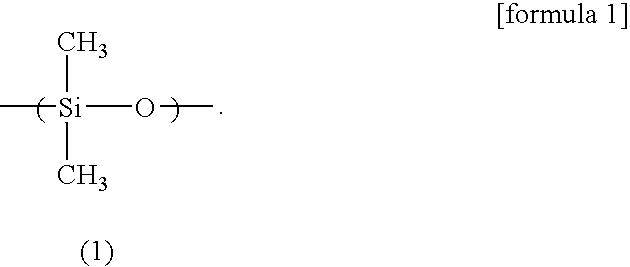Antireflection Hard Coating Film, Optical Element and Image Display
a technology of hard coating film and optical element, applied in the direction of polarising element, synthetic resin layered products, instruments, etc., can solve the problems of weak interlayer adhesion, failure at the interface with the hard coating layer, cost and weight disadvantages of placing such a cover plate, etc., to reduce the antireflection properties, good scratch resistance, and high hardness
- Summary
- Abstract
- Description
- Claims
- Application Information
AI Technical Summary
Benefits of technology
Problems solved by technology
Method used
Image
Examples
example 1
Transparent Plastic Film Substrate
[0185]Used as the substrate was a triacetyl cellulose film having a refractive index of 1.48 and a thickness of 80 μm.
(Reactive Silicone (B))
[0186]A compound (PC-4131, manufactured by Dainippon Ink and Chemicals, Incorporated) was used in which a dimethylsiloxane unit, a methyl, 3-acryloyl-2-hydroxypropoxypropyl siloxane unit, and a methyl, 2-acryloyl-3-hydroxypropoxypropyl siloxane unit were copolymerized in a molar ratio of 100:20:5. The compound was named as reactive silicone (B1), which corresponds to a compound having the units represented by formulae (1), (2) and (3), respectively. Reactive silicone (B1) had a weight average molecular weight in the range of 1000 to 20000. The weight average molecular weight was measured under the following GPC conditions: measuring apparatus, HLC-8120GPC manufactured by Tosoh Corporation; column, G4000HXL+G2000HXL+G1000HXL (each 7.8 mmφ×30 cm, 90 cm in total) manufactured by Tosoh Corporation; column temperatu...
example 2
[0191]An antireflection hard coating film was obtained using the process of Example 1, except that the thickness of the hard coating layer was changed to 20 μm.
example 3
Hard Coating Layer-Forming Material
[0192]An ultraviolet radiation-curable resin (Unidic 17-806, manufactured by Dainippon Ink and Chemicals, Incorporated) containing isocyanurate acrylate, pentaerythritol triacrylate, dipentaerythritol hexaacrylate, and isophorone diisocyanate polyurethane was used as a curable compound (A2). A hundred parts of the curable compound (A2), 0.5 parts of the reactive silicone (B1) described in Example 1, and 4.5 parts of a polymerization initiator (Irgacure 184, manufactured by Ciba Specialty Chemicals Inc.) were diluted with butyl acetate such that a solids content of 40% was reached, and as a result, a hard coating layer forming material (solution) was prepared.
[0193]An antireflection hard coating film was obtained using the process of Example 1, except that the resulting material was used in place of the hard coating layer-forming material of Example 1.
PUM
| Property | Measurement | Unit |
|---|---|---|
| thickness | aaaaa | aaaaa |
| thickness | aaaaa | aaaaa |
| refractive index | aaaaa | aaaaa |
Abstract
Description
Claims
Application Information
 Login to View More
Login to View More - R&D
- Intellectual Property
- Life Sciences
- Materials
- Tech Scout
- Unparalleled Data Quality
- Higher Quality Content
- 60% Fewer Hallucinations
Browse by: Latest US Patents, China's latest patents, Technical Efficacy Thesaurus, Application Domain, Technology Topic, Popular Technical Reports.
© 2025 PatSnap. All rights reserved.Legal|Privacy policy|Modern Slavery Act Transparency Statement|Sitemap|About US| Contact US: help@patsnap.com



